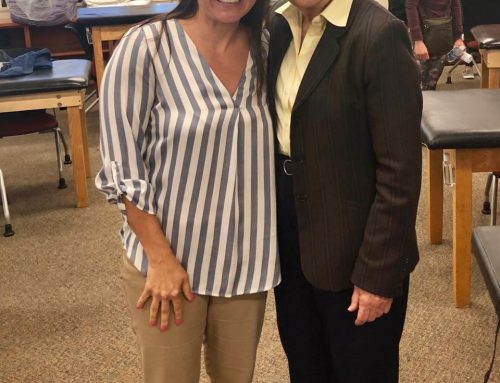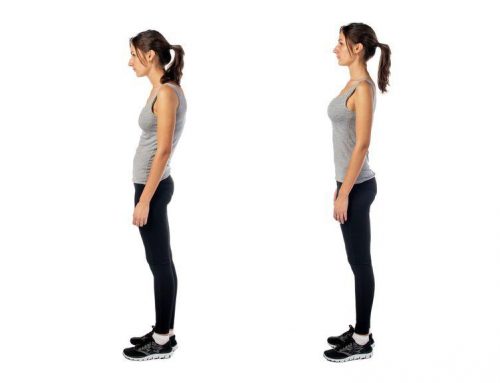Osteoporosis Prevention – Who is at Risk?
- Multiple myeloma
- Multiple sclerosis
- Organ transplants
- Parkinson’s disease
- Poor diet
- Post-polio syndrome
- Premature menopause
- Prostate cancer
- Rheumatoid arthritis
- Severe liver disease (including biliary cirrhosis)
- Spinal cord injuries
- Stroke (CVA)
- Thalassemia
- Thyrotoxicosis
- Weight loss
Certain people are more likely to develop osteoporosis than others. Factors that increase the likelihood of developing osteoporosis and broken bones are called “risk factors.” While you have no control over some of these risk factors, there are others you can change. Many of the choices you make each day can affect your bones. By making healthier choices you can help to reduce your risk of osteoporosis as well as the painful fractures it can cause. You can learn about many of the risk factors for osteoporosis below.
Age. Osteoporosis can affect people of all ages, but it is far more common in older people than younger people. All of us lose some bone density as we age, but some of us lose more bone or lose it faster than others. It is not true that every older person gets osteoporosis, but it does become more common with age.
Sex. Osteoporosis is more common in women than men. Eighty percent, or four out of five, of the 10 million Americans who have it are women. There are several reasons for this. Women have lighter, thinner bones to begin with. They also lose loose bone rapidly after menopause. In fact, a woman’s risk of osteoporosis is equal to her combined risk of breast, ovarian and uterine cancer.
But this doesn’t mean osteoporosis is just a women’s disease. Twenty percent, or two million people with osteoporosis, are men. A man older than 50 is more likely to break a bone due to osteoporosis than he is to get prostate cancer.
Family History. Research suggests that heredity and genetics play a major role in osteoporosis. If either of your parents had osteoporosis or a history of broken bones, you are more likely to get it too. Also, if one of your parents had a noticeable amount of height loss or a spine that curved forward, they may have had osteoporosis.
Low Body Weight/Being Small and Thin. Women and men with small bones are more likely than larger people to have osteoporosis. But that doesn’t mean heavier or larger people can’t get it.
Race and Ethnicity. While osteoporosis affects all races and ethnicities, people in the
History of Broken Bones. People who have broken one or more bones during their adult years are at greater risk for osteoporosis. In fact, they may already have low bone density or osteoporosis. A person who has broken a bone as an adult should talk to their healthcare provider about osteoporosis.
Menopause. For most women, bone loss increases after menopause, when estrogen levels drop sharply.
Low Sex Hormones
a) Estrogen Levels. In women, the sex hormone estrogen protects bones. If you are a woman and go through menopause early, your risk of osteoporosis increases. The same is true if you have your ovaries removed. That’s because your ovaries produce most of your body’s estrogen. In either of these cases, it’s important to speak with your healthcare provider about steps to improve bone health.
b) Missing Periods. If you are a young woman and don’t have regular periods, this could mean low estrogen levels. There could be many reasons for this, such as exercising too much or eating so little that you become too thin. Other causes could include disorders of the ovaries or the pituitary, which is the gland in the brain that directs hormone production by the ovaries. Regardless of the cause, loss of estrogen and extreme thinness can harm bone health. It can also affect other vital body systems. For these reasons, young women who don’t have regular periods should speak to their healthcare provider.
c) Testosterone Levels. In men, testosterone protects bone. Estrogen levels in men are also important. Low levels of these hormones can lead to bone loss. A number of factors can cause levels to be low, including eating too little or drinking too much alcohol. A simple blood test can tell you if your hormone levels are normal.
Diet
a) Calcium. Calcium is a mineral that is important for healthy bones. It is a building block of bone.
b) Vitamin D. Vitamin D is important because it helps your body use calcium. If you don’t get enough vitamin D or if your body does not absorb it well, you are at much greater risk for bone loss and osteoporosis.
a) Inactive Lifestyle. People who are bedridden, are inactive or do not exercise are at high risk of osteoporosis. Certain kinds of regular exercise can help keep your bones strong.
Some medications can be harmful to your bones, especially if you take them at high doses or for a long time. One of the riskiest types of medications for bones is steroid medications. Many people take these medications to ease inflammation in conditions like rheumatoid arthritis or asthma.
- Aluminum-containing antacids
- Antiseizure medications (only some) such as Dilantin® or Phenobarbital
- Aromatase inhibitors such as Arimidex®, Aromasin® and Femara®
- Cancer chemotherapeutic drugs
- Cyclosporine A and FK506 (Tacrolimus)
- Glucocorticoids such as cortisone and prednisone
- Gonadotropin releasing hormone (GnRH) such as Lupron® and Zoladex®
- Heparin
- Lithium
- Medroxyprogesterone acetate for contraception (Depo-Provera®)
- Methotrexate
- Proton pump inhibitors (PPIs) such as Nexium®, Prilosec® and Prevacid®
- Selective serotonin reuptake inhibitors (SSRIs) such as Lexapro®, Prozac® and Zoloft®
- Tamoxifen® (premenopausal use)
- Thiazolidenediones (Actos® and Avandia®)
- Thyroid hormones in excess
There are many health problems that can harm your bones and increase your risk of osteoporosis. Some of these include:
Anorexia nervosa is a major risk factor for osteoporosis for many reasons. In women with anorexia nervosa, estrogen levels decrease to such an extent that menstrual periods either become irregular or stop. This drop in estrogen causes bone loss. Poor nutrition in women with anorexia and other eating disorders is also harmful to bones. Although more common in teenage girls and young women, men can also have eating disorders. They can also be at great risk for bone loss and osteoporosis.
Organ Transplants. People who have organ transplants must take medications to prevent their bodies from rejecting their new organs. Some of these drugs can weaken bones.
Rheumatoid Arthritis (RA). People with rheumatoid arthritis are at increased risk for osteoporosis. In addition, RA is often treated with steroid medications, which further increases the risk.
Weight Loss. Losing weight can cause bone loss. Many serious conditions such as heart disease and diabetes are associated with obesity and excess weight. Fortunately, you can protect your bones while losing weight by exercising regularly and eating a healthy diet that provides enough calcium and vitamin D.
Other Diseases and Conditions. Many other health problems can also affect the bones. Some of these include genetic disorders and diseases of the kidneys, lungs or digestive system. With proper treatment, most people can live well with these diseases. Living well also involves taking good care of your bones.
Medical Conditions That Can Lead to Osteoporosis
- AIDS/HIV
- Ankylosing spondylitis
- Blood and bone marrow disorders
- Breast cancer
- Cushing’s syndrome
- Eating disorders
- Emphysema
- Female athlete triad
- Gastrectomy
- Gastrointestinal bypass procedures
- Hyperparathyroidism
- Hyperthyroidism
- Idiopathic scoliosis
- Inflammatory bowel disease
- Diabetes mellitus
- Kidney disease
- Lupus Lymphoma and leukemia
- Multiple myeloma
- Multiple sclerosis
- Organ transplants
- Parkinson’s disease
- Poor diet
- Post-polio syndrome
- Premature menopause
- Prostate cancer
- Rheumatoid arthritis
- Severe liver disease (including biliary cirrhosis)
- Spinal cord injuries
- Stroke (CVA)
- Thalassemia
- Thyrotoxicosis
- Weight loss
Certain people are more likely to develop osteoporosis than others. Factors that increase the likelihood of developing osteoporosis and broken bones are called “risk factors.” While you have no control over some of these risk factors, there are others you can change. Many of the choices you make each day can affect your bones. By making healthier choices you can help to reduce your risk of osteoporosis as well as the painful fractures it can cause. You can learn about many of the risk factors for osteoporosis below.
Age. Osteoporosis can affect people of all ages, but it is far more common in older people than younger people. All of us lose some bone density as we age, but some of us lose more bone or lose it faster than others. It is not true that every older person gets osteoporosis, but it does become more common with age.
Sex. Osteoporosis is more common in women than men. Eighty percent, or four out of five, of the 10 million Americans who have it are women. There are several reasons for this. Women have lighter, thinner bones to begin with. They also lose loose bone rapidly after menopause. In fact, a woman’s risk of osteoporosis is equal to her combined risk of breast, ovarian and uterine cancer.
But this doesn’t mean osteoporosis is just a women’s disease. Twenty percent, or two million people with osteoporosis, are men. A man older than 50 is more likely to break a bone due to osteoporosis than he is to get prostate cancer.
Family History. Research suggests that heredity and genetics play a major role in osteoporosis. If either of your parents had osteoporosis or a history of broken bones, you are more likely to get it too. Also, if one of your parents had a noticeable amount of height loss or a spine that curved forward, they may have had osteoporosis.
Low Body Weight/Being Small and Thin. Women and men with small bones are more likely than larger people to have osteoporosis. But that doesn’t mean heavier or larger people can’t get it.
Race and Ethnicity. While osteoporosis affects all races and ethnicities, people in the
History of Broken Bones. People who have broken one or more bones during their adult years are at greater risk for osteoporosis. In fact, they may already have low bone density or osteoporosis. A person who has broken a bone as an adult should talk to their healthcare provider about osteoporosis.
Menopause. For most women, bone loss increases after menopause, when estrogen levels drop sharply.
Low Sex Hormones
a) Estrogen Levels. In women, the sex hormone estrogen protects bones. If you are a woman and go through menopause early, your risk of osteoporosis increases. The same is true if you have your ovaries removed. That’s because your ovaries produce most of your body’s estrogen. In either of these cases, it’s important to speak with your healthcare provider about steps to improve bone health.
b) Missing Periods. If you are a young woman and don’t have regular periods, this could mean low estrogen levels. There could be many reasons for this, such as exercising too much or eating so little that you become too thin. Other causes could include disorders of the ovaries or the pituitary, which is the gland in the brain that directs hormone production by the ovaries. Regardless of the cause, loss of estrogen and extreme thinness can harm bone health. It can also affect other vital body systems. For these reasons, young women who don’t have regular periods should speak to their healthcare provider.
c) Testosterone Levels. In men, testosterone protects bone. Estrogen levels in men are also important. Low levels of these hormones can lead to bone loss. A number of factors can cause levels to be low, including eating too little or drinking too much alcohol. A simple blood test can tell you if your hormone levels are normal.
Diet
a) Calcium. Calcium is a mineral that is important for healthy bones. It is a building block of bone.
b) Vitamin D. Vitamin D is important because it helps your body use calcium. If you don’t get enough vitamin D or if your body does not absorb it well, you are at much greater risk for bone loss and osteoporosis.
a) Inactive Lifestyle. People who are bedridden, are inactive or do not exercise are at high risk of osteoporosis. Certain kinds of regular exercise can help keep your bones strong.
Some medications can be harmful to your bones, especially if you take them at high doses or for a long time. One of the riskiest types of medications for bones is steroid medications. Many people take these medications to ease inflammation in conditions like rheumatoid arthritis or asthma.
- Aluminum-containing antacids
- Antiseizure medications (only some) such as Dilantin® or Phenobarbital
- Aromatase inhibitors such as Arimidex®, Aromasin® and Femara®
- Cancer chemotherapeutic drugs
- Cyclosporine A and FK506 (Tacrolimus)
- Glucocorticoids such as cortisone and prednisone
- Gonadotropin releasing hormone (GnRH) such as Lupron® and Zoladex®
- Heparin
- Lithium
- Medroxyprogesterone acetate for contraception (Depo-Provera®)
- Methotrexate
- Proton pump inhibitors (PPIs) such as Nexium®, Prilosec® and Prevacid®
- Selective serotonin reuptake inhibitors (SSRIs) such as Lexapro®, Prozac® and Zoloft®
- Tamoxifen® (premenopausal use)
- Thiazolidenediones (Actos® and Avandia®)
- Thyroid hormones in excess
There are many health problems that can harm your bones and increase your risk of osteoporosis. Some of these include:
Anorexia nervosa is a major risk factor for osteoporosis for many reasons. In women with anorexia nervosa, estrogen levels decrease to such an extent that menstrual periods either become irregular or stop. This drop in estrogen causes bone loss. Poor nutrition in women with anorexia and other eating disorders is also harmful to bones. Although more common in teenage girls and young women, men can also have eating disorders. They can also be at great risk for bone loss and osteoporosis.
Organ Transplants. People who have organ transplants must take medications to prevent their bodies from rejecting their new organs. Some of these drugs can weaken bones.
Rheumatoid Arthritis (RA). People with rheumatoid arthritis are at increased risk for osteoporosis. In addition, RA is often treated with steroid medications, which further increases the risk.
Weight Loss. Losing weight can cause bone loss. Many serious conditions such as heart disease and diabetes are associated with obesity and excess weight. Fortunately, you can protect your bones while losing weight by exercising regularly and eating a healthy diet that provides enough calcium and vitamin D.
Other Diseases and Conditions. Many other health problems can also affect the bones. Some of these include genetic disorders and diseases of the kidneys, lungs or digestive system. With proper treatment, most people can live well with these diseases. Living well also involves taking good care of your bones.
Medical Conditions That Can Lead to Osteoporosis
- AIDS/HIV
- Ankylosing spondylitis
- Blood and bone marrow disorders
- Breast cancer
- Cushing’s syndrome
- Eating disorders
- Emphysema
- Female athlete triad
- Gastrectomy
- Gastrointestinal bypass procedures
- Hyperparathyroidism
- Hyperthyroidism
- Idiopathic scoliosis
- Inflammatory bowel disease
- Diabetes mellitus
- Kidney disease
- Lupus Lymphoma and leukemia





